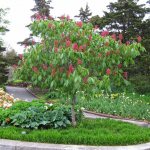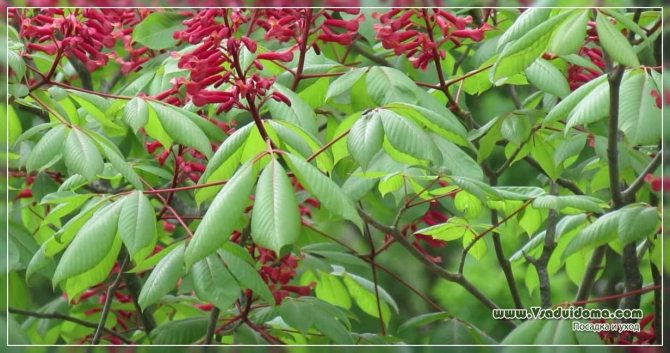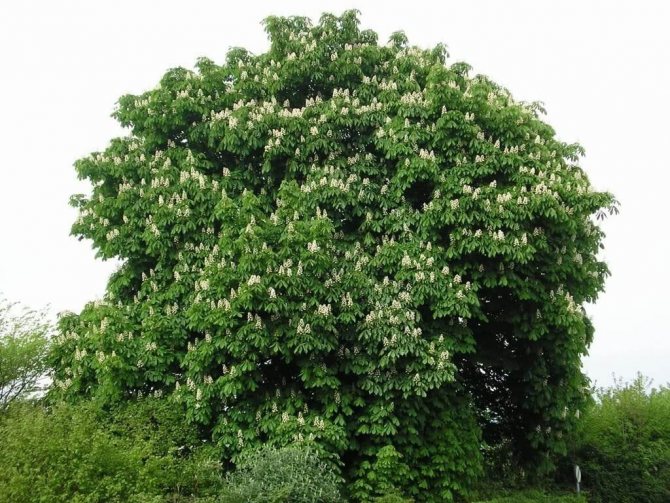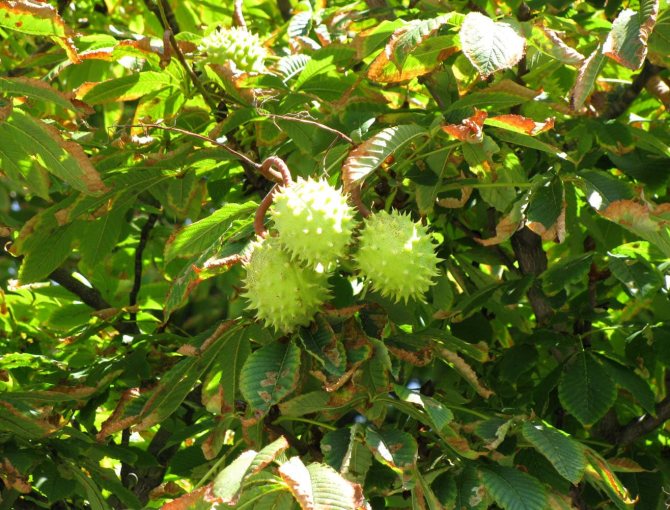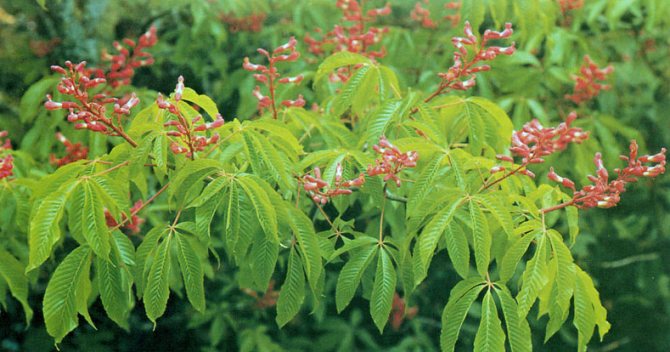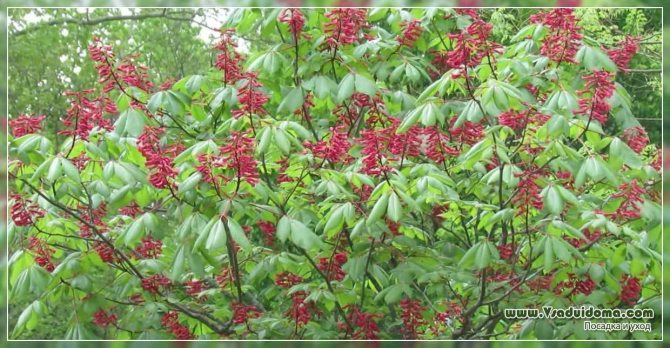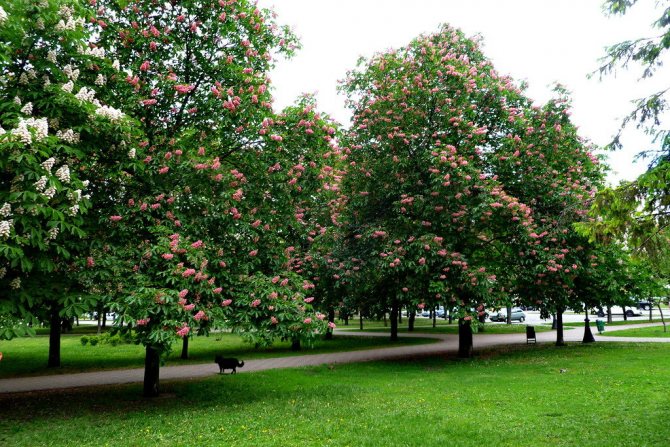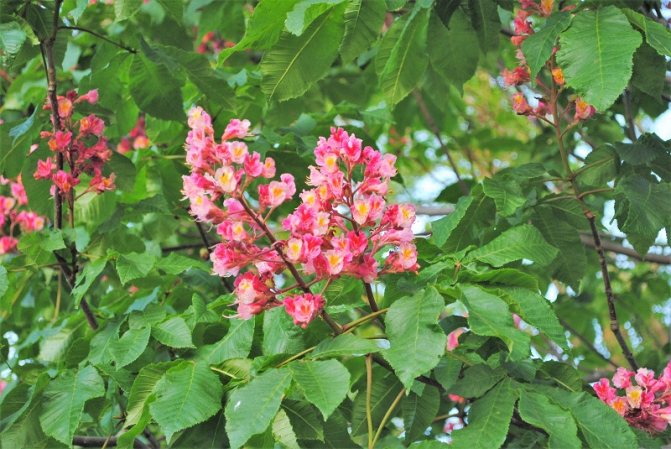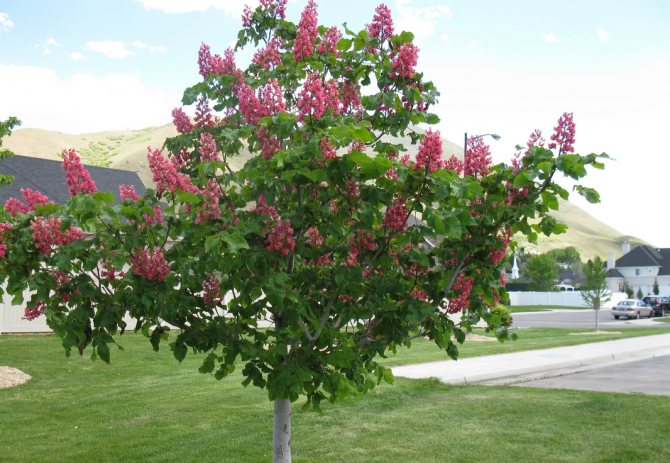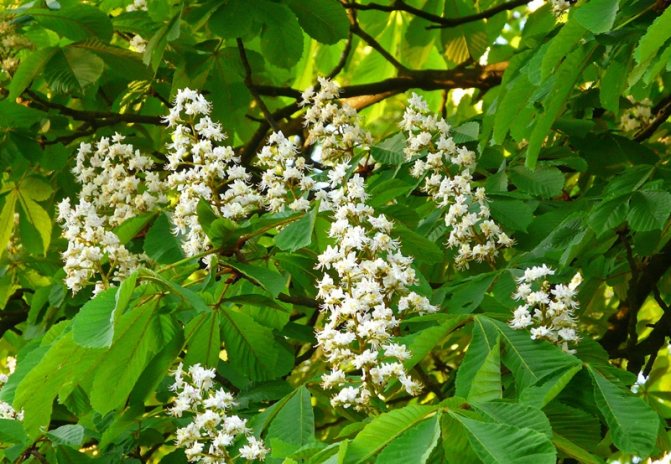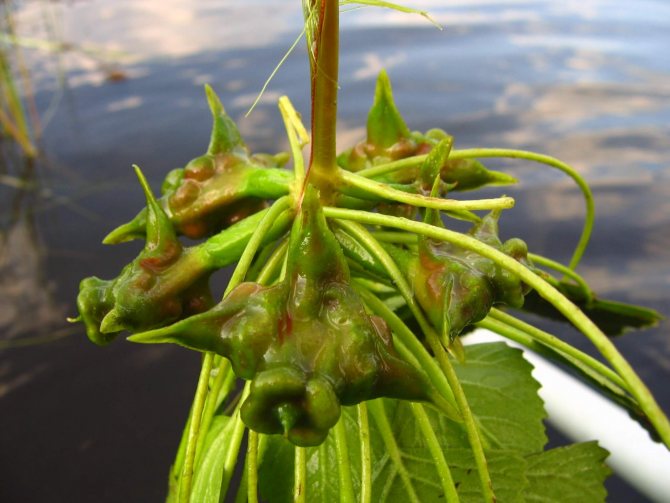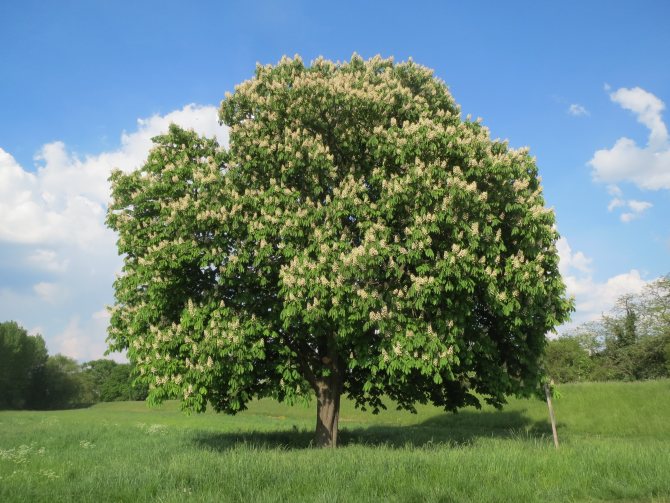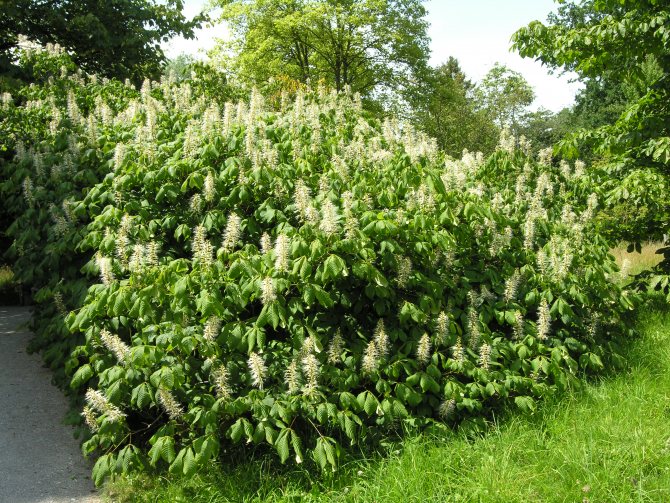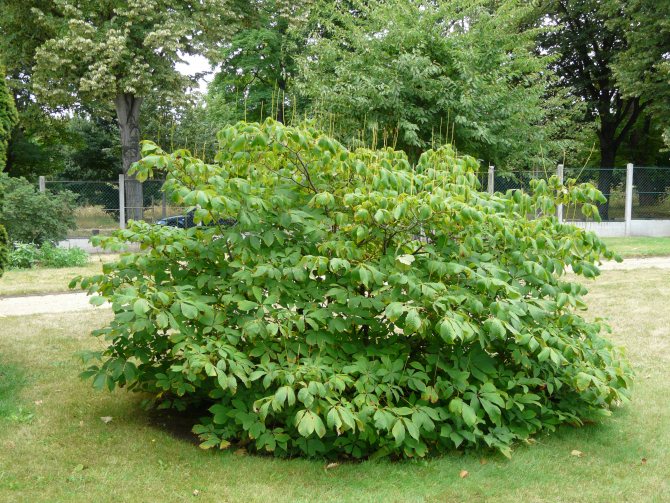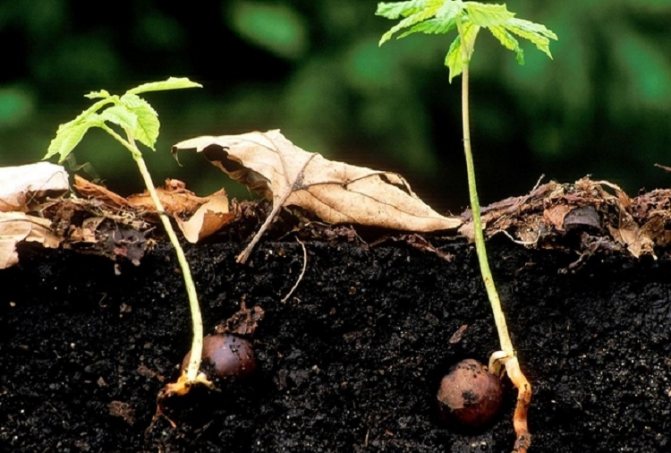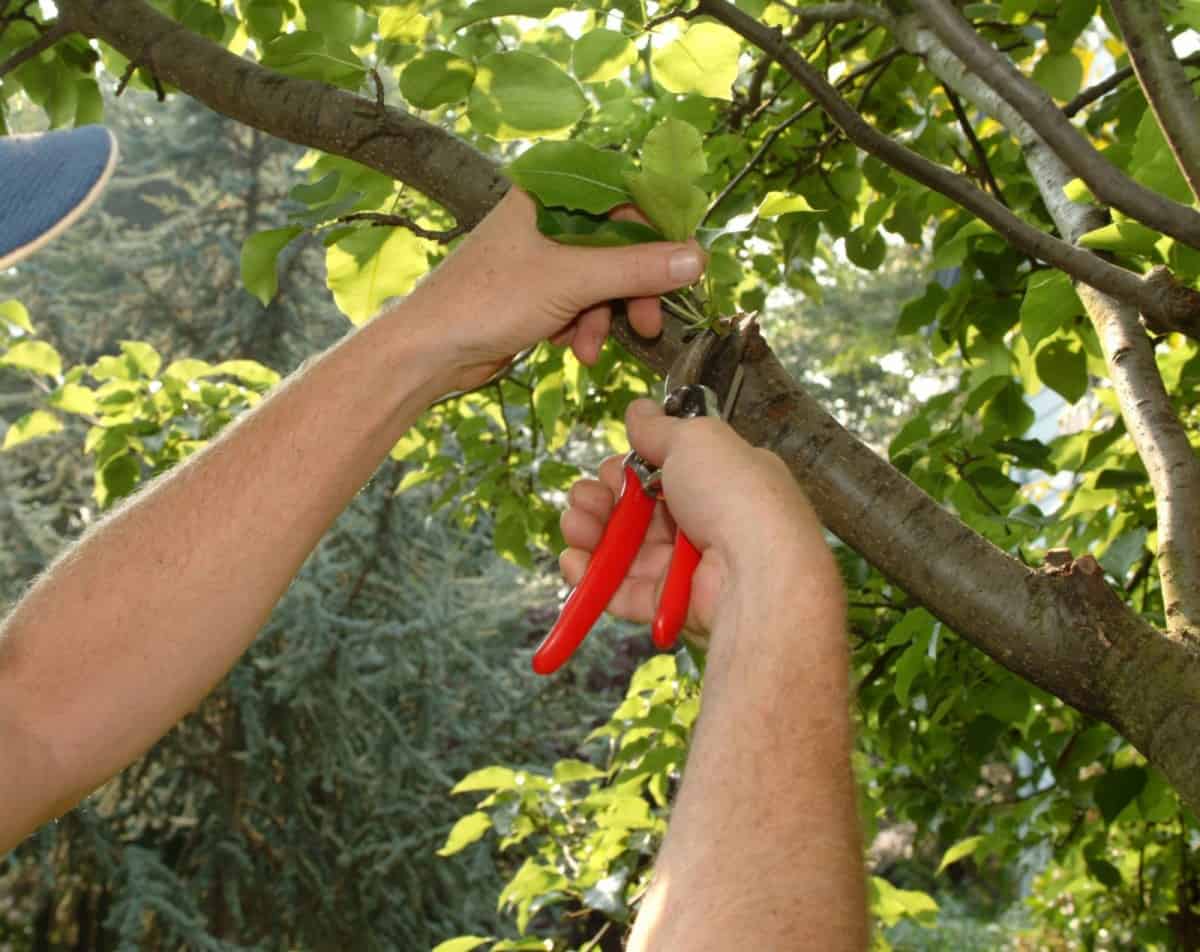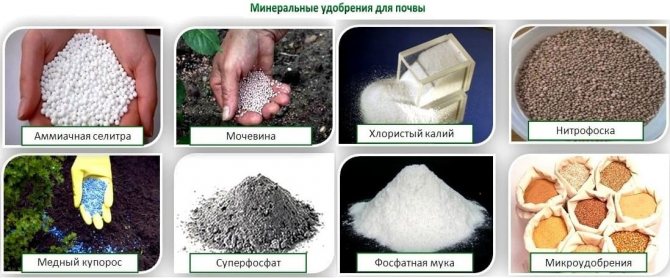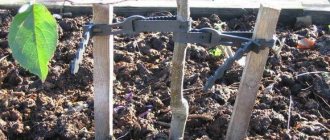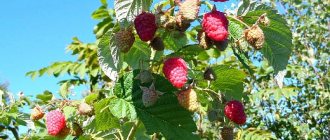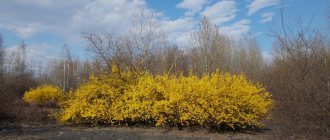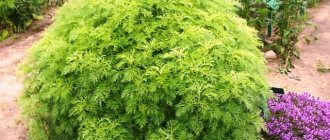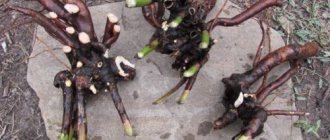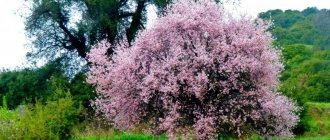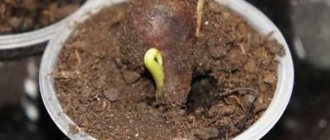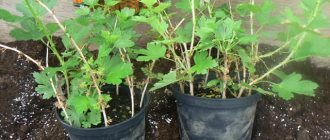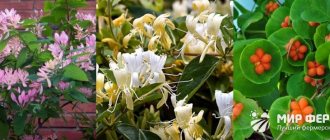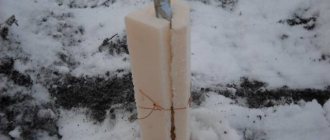Types of chestnuts
Actually, chestnuts belong to the beech family and to the genus of chestnuts. But the horse chestnut represents a completely different family - the Sapindaceae. It also includes such exotic fruits known in our country as lychee and rambutan.
If you compare the fruits and leaves of all plants in this family, including the horse chestnut, you can easily find similarities. Fruits with thorns, similar to round hedgehogs. And the leaves of all representatives are similar to the leaves of shefflera radiant, only with teeth and on long petioles: like spread fingers.
Chestnuts are loved for their unique flowering. The so-called "candles" are flowers collected in a brush, which are located directly and make you admire a unique sight from May to June. After flowering, the fruit is formed. This box with thorns contains a large seed called a chestnut.
In Russia, the horse chestnut is widespread, especially in the middle lane. This tree is planted from Moscow to St. Petersburg. But he does not reach large sizes there. But in the southern part of Siberia, where the horse chestnut is widespread, it grows much larger. In total, 23 species of horse chestnut are known, of which about 13 grow in Russia.
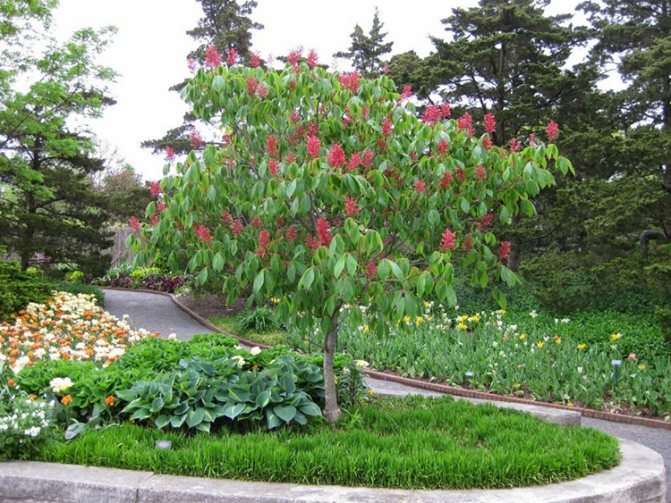
Californian horse chestnut (Aesculus californica)
It is a native species of flora in the western states of America, including California. It is a compact tree with a wide spreading crown that looks very much like a large bush. Very often, the California chestnut has more than one trunk, but several. Its height ranges from 3 to 12 meters.
The leaves consist of 5 leaf plates in the shape of a horse chestnut leaf. The fruit is oval, with several seeds inside. Some parts of the tree, including the fruit, are poisonous.
For its decorative qualities and fragrant flowers, this type of horse chestnut is grown in parks and on the slopes of ravines to prevent soil erosion. Despite the poisonous properties, in lean years, the fruits were soaked and fed to livestock.
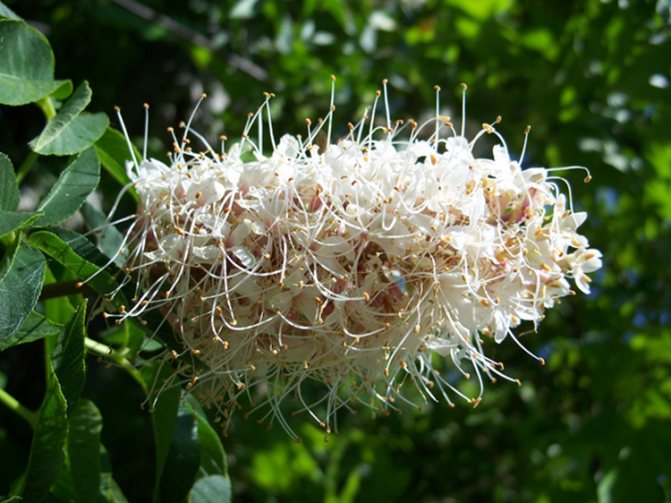

Horse chestnut yellow (Aesculus flava)
Grows in North America. A frost-resistant species that can withstand temperatures as low as -29 ° C. It got its name for the yellow tint of the leaves in autumn and yellow flowers with a pink center. During flowering, the tree is covered with yellow "candles".
The trees can reach a height of 15 meters, but the most common yellow chestnut is no more than 10 meters.
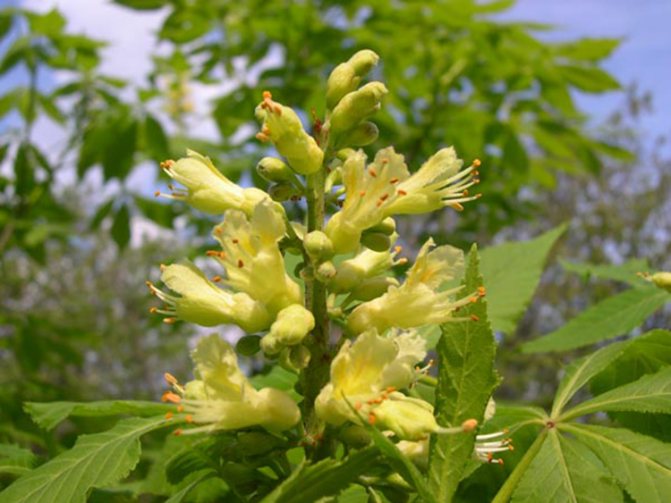

Horse Chestnut (Aesculus glabra)
Perhaps the chestnut received this name for a loose, loose crown, which opens a view of the trunk and skeletal branches. But, despite this, the naked horse chestnut is intensively used in parks and planting in city alleys.
The height of the tree is more than 15 meters. The crown is round, but sloppily hanging branches spoil the whole impression. In autumn, the leaves take on a rich red hue. The fruit is covered not with thorns, but with pimples.
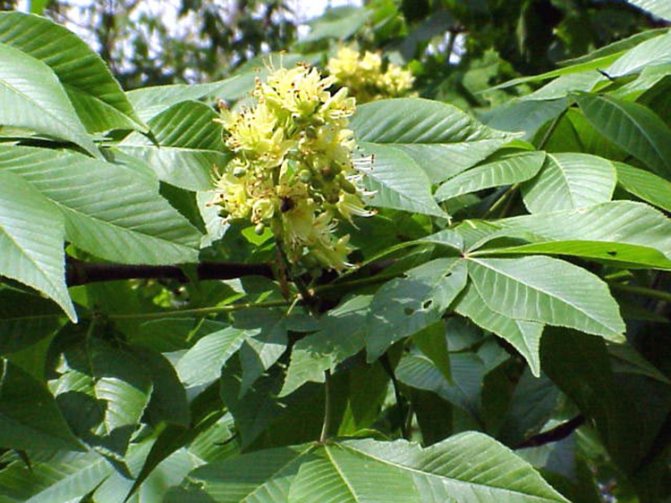

Indian Horse Chestnut (Aesculus indica)
Indian horse chestnut is common and grows in North India. A giant tree 20-30 meters high with 7-finger reddish leaves and pink flowers gathered in panicles. Like most horse chestnuts, it is poisonous and has only decorative value.
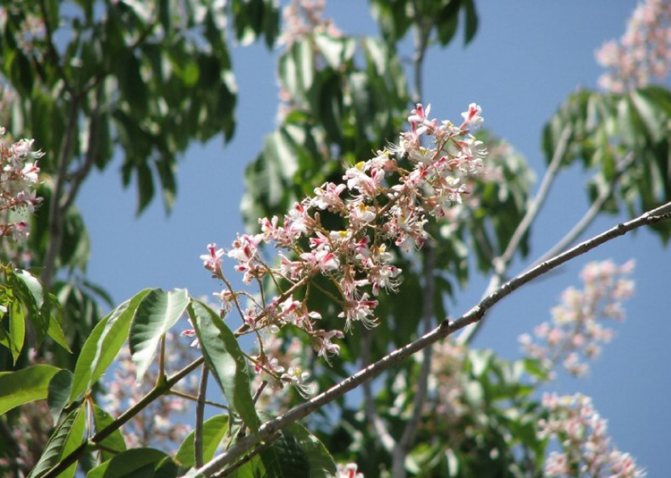

Small-flowered horse chestnut (Aesculus parviflora)
Small-flowered horse chestnut is a shrub, three meters high. Its drooping arched branches create a wide crown, which is much wider in width than in height. Upward, such a chestnut grows only up to 4 meters, and then continues to grow due to shoots extending from the roots in breadth.
The small-flowered chestnut lives up to its name: its candle-like brushes are very loose, and the flowers are graceful, thin, on high pedicels. This tree-bush grows in partial shade or in the shade of other trees due to its short stature. The fruits do not have thorns.
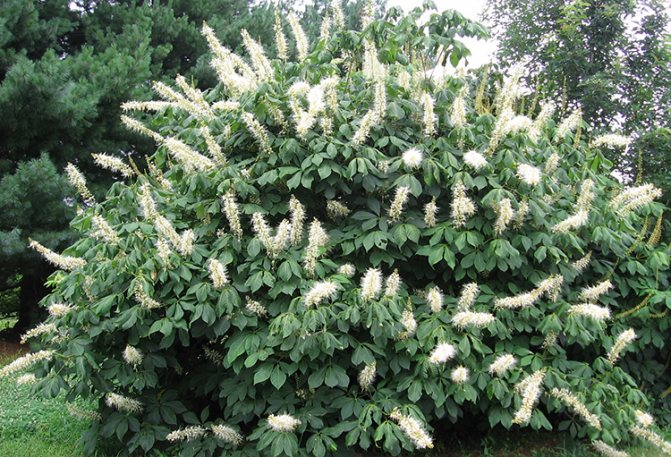

Red horse chestnut (Aesculus pavia)
This is perhaps the most decorative of all horse chestnuts. Pavia red chestnut is notable not for its size or leaves, but only for its carmine red flowers. During the flowering period, the tree takes on a very elegant look.
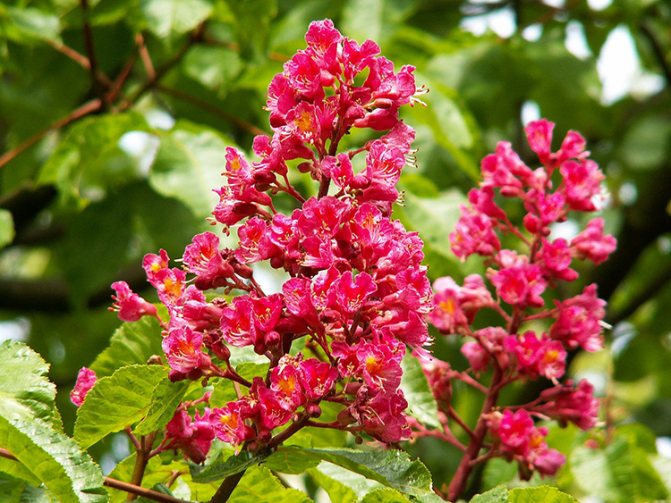

Japanese Horse Chestnut (Aesculus turbinata)
It is named so because it is endemic to Japan. Over time, he was transported to other countries, including America. It is distinguished by elongated leaves and beautiful lush "candles".
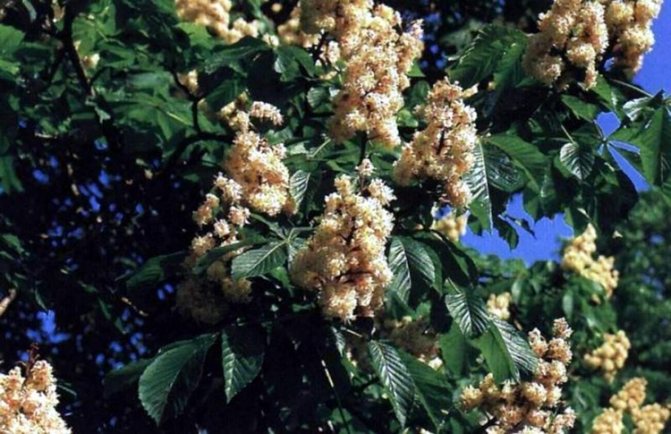

Horse Chestnut Meat Red (Aesculus carnea)
Like the red chestnut pavia, the meat red stands out for its colors. During the flowering period, the tree has a decorative appearance due to candle-shaped inflorescences of different shades: from pink to red.
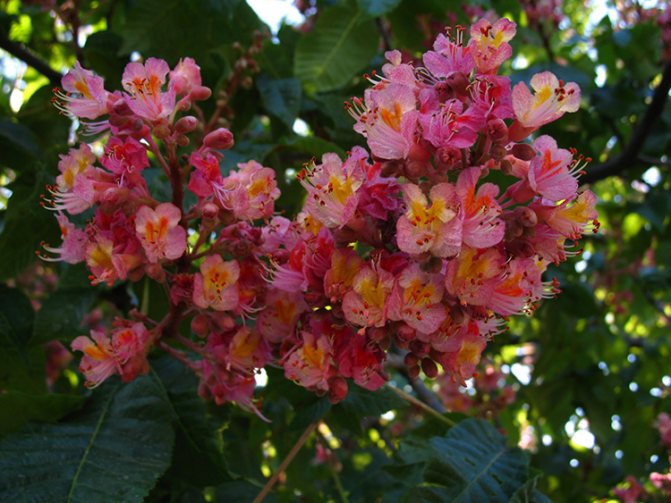

Varieties
For temperate climates, varieties such as American chestnut, European and horse are most suitable. They are resistant to subzero temperatures and are quite unpretentious.
American chestnut, aka toothed, has a brown bark, yellowish shoots, on which there are many long lentils.
The leaves are large with sharp teeth. Edible nuts, covered with fluff, taste sweet. The tree develops rapidly, but requires a lot of sunlight.
Sowing European chestnut has brown bark and ribbed reddish or olive shoots. The branches are covered with glandular hairs.
The leaves are oblong with crescent teeth, covered with a grayish down below.
Male dense spikelets-inflorescences reach 35 cm in length, female ones - short and knocked down. The fruits are edible, covered with a prickly shell.
Horse the chestnut is very decorative. It has a spreading dark crown and conical inflorescences.
Leaves with long petioles, five- or seven-fingered.
Fruits are inedible, round, hidden in thorny pericarp. This variety prefers to grow in loamy soils with an admixture of lime. Horse chestnut is a great natural air filter.
Photos of chestnut varieties can be viewed in the gallery:
Growing from walnut
When you have decided on a variety, you can start growing. Some of the listed species of horse chestnut grow in city parks and alleys. Here you can also start collecting fruits. Another tried and tested option is to get seed from breeders.
Preparation of chestnut planting material
In order for the planting to be successful, the "nuts" after collection must be prepared. Under natural conditions, one of 20-30 seeds grows without additional effort. The preparation algorithm is as follows:
First of all, the fruits of the horse chestnut must be collected from the ground. In no case pluck from the tree, they are unripe.
Sort out and select the best ones, without damages, dents and signs of disease.
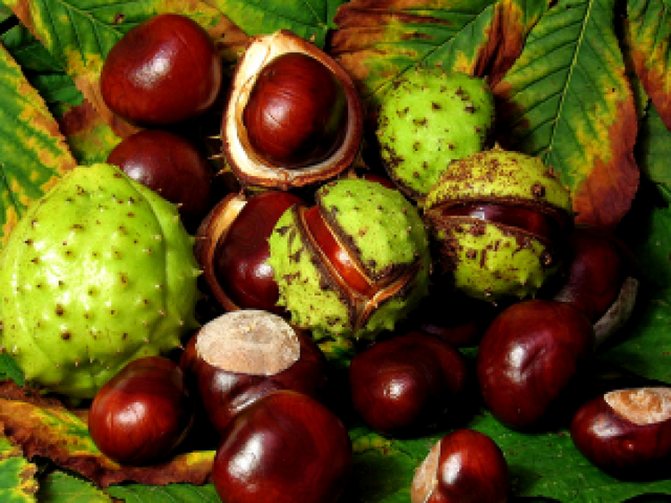

Prepared fruits are peeled (with or without thorns) and soaked in a little water. It is advisable that the water does not completely cover the "nuts". The water needs to be changed every day so that it does not turn sour. A damp cloth or gauze is placed on top of the fruit.
After 2-3 days, the swollen fruits can be refrigerated for stratification. For autumn planting, it lasts 10-14 days. In this case, the chestnuts are sprinkled with slightly damp sand.
Sand for stratification must be taken from a large river.Before use, it must be calcined in an oven or microwave to kill pathogenic bacteria.
Planting a chestnut nut
For planting, prepared "nuts" are placed in a furrow at a distance of 40-50 cm from each other. The furrow should be no more than 10 cm deep and well spilled with warm water with potassium permanganate. After that, the crops are sprinkled with old leaves or sawdust. And in the spring, when the snow melts, the mulch needs to be shoveled to enable the seedlings to break through.
If the fruits will be stored all winter until spring planting, then the storage temperature should not exceed 5-7C. A month before planting, the seeds are prepared in the same way as during the autumn sowing. The difference is that the stratification time can be significantly increased, and after planting, cover the ground with a film.
Chestnut fruits are very fond of mice. If you are planting seeds in the fall, use a mice repellent. For example, brush the fruit with Vishnevsky ointment. Or bury paper lumps smeared with this ointment around the plantings.
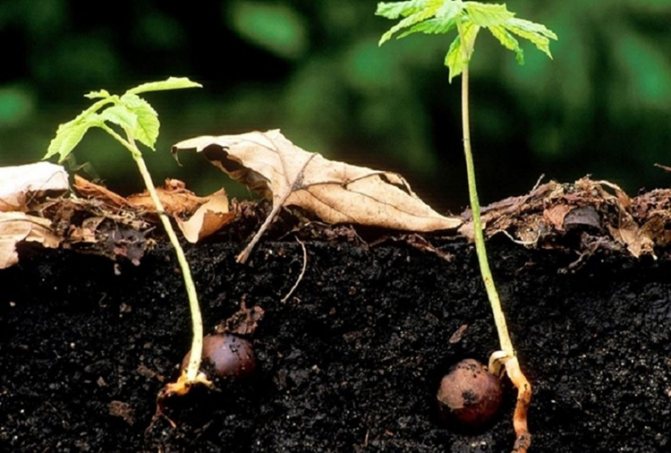

Chestnut care rules
After the seedlings have appeared, you need to carefully loosen the ground around. Processing must be carried out so that when watering, the water does not flow in different directions, but remains in the near-stem circle. A month after the shoots appear, the plant needs to be fed.
A complex mineral fertilizer or any of the organic fertilizers is taken:
- infusion of manure;
- "Green" fertilizer (herb infusion);
- ash;
- dolomite flour;
- compost or humus.
If the fertilizer is dry, then it is scattered around the seedling. For better formation of the root system, watered with a solution of nitroammophos or superphosphate. Why take a matchbox of fertilizer and dilute it in a bucket of water.
Watering a young chestnut
While the chestnut is small, it needs to be watered frequently as the root system is still in its infancy. The plant cannot feed on its own and extract water from deep groundwater. In addition, the chestnut is moisture-loving, and it must be watered regularly so that the soil does not dry out.
Planting chestnuts in a permanent location
Chestnuts are transplanted 3 years after they have been sown in the ground. For a successful landing, you need to choose the right time and place of landing.
In order for the chestnuts to take root better, you do not need to delay the transplant too much. Better to do this a year earlier than later.
A large plant is more sick when transplanted to a permanent place, since the root system is damaged. The chestnut is suspended in growth and development in order to build up the root that is necessary for a plant of this age.
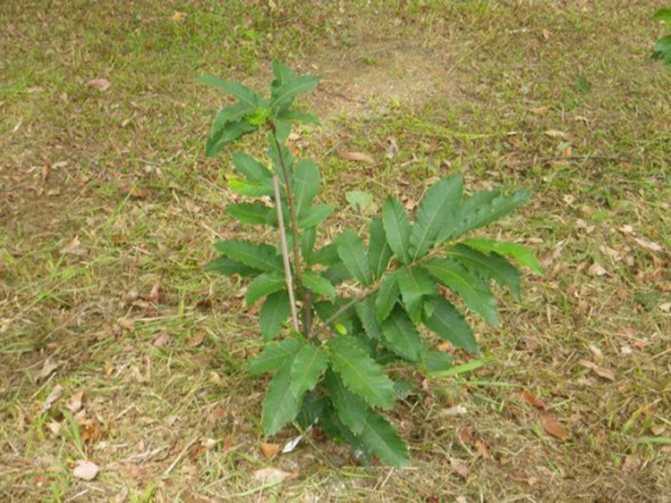

Seat selection
Chestnut loves the sun's rays, but it is better to shade it with something for the first time. For example, these can be annual plants that are tall or curly on a support. It must be borne in mind that over time, when the chestnut grows, nothing should interfere with it. There should be no shrubs nearby that he could shade.
Landing dates
As soon as the soil warms up in the spring, you can transplant horse chestnut seedlings to a permanent place. In terms of time, this is the end of April and the first half of May. An autumn plant transplant is also possible. This should be done as soon as the constant air temperature does not rise above 12C.
Soil preparation
The soil at the planting site should be moist and fertile. It is best if it is a well-fertilized loam. Chestnut lives for a long time, so we prepare in advance (six months before planting) a large planting pit so that it is saturated with oxygen.
The pit should be at least half a meter deep. Its width and length is 50-60 cm. Having dug a large hole, lay various plant residues on the bottom in a layer of 20-40 cm (depending on the depth of the hole). These can be branches of different thicknesses, as well as grass, cones, manure and sod.Before planting, you need to add ash and sand so that the roots of the plant do not come into contact with non-rotten manure and plant debris.
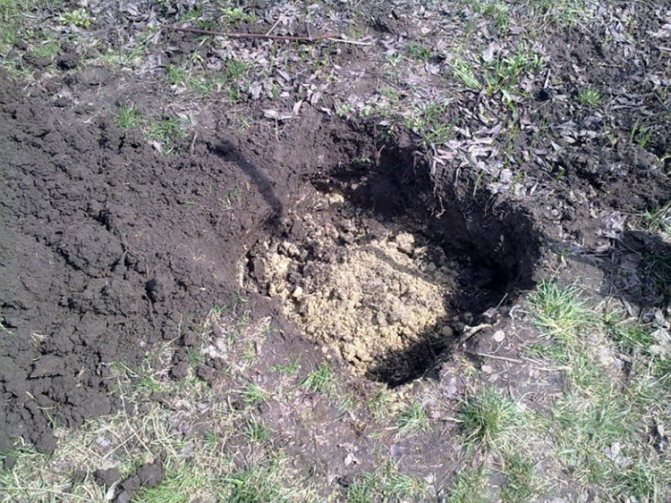

Further, compost or fertile soil is poured to the intended root. From the sides, soil is poured onto the chestnut seedling. Best of all, if it is rotted sifted compost or humus. Before adding soil, you need to add ash (half a liter per bucket) and superphosphate (2 tablespoons per bucket) to them. Mix well.
Landing rules
As mentioned above, chestnuts have a very voluminous crown, therefore they require a lot of space. It is recommended to plant a tree in an area where there is a lot of sunlight. With a lack of lighting, flowering will be poor.
In order for the chestnut to develop well, there should be no buildings and vegetation at a distance of 5 meters from it.
If you plant a tree as a seedling, the optimal time is the beginning of spring, or the end of autumn. When nuts are planting material, the best time is the end of spring, or they are left for the winter in the fall.
The root system of the tree does not deepen, it spreads over the surface of the soil. So that water stagnation is not created after irrigation, and the roots do not suffer from this, for this they select soil with neutral acidity, the maximum is slightly acidic. At the bottom of the planting pit, good drainage is sure to be done. The optimum soil for a plant is black soil. If the soil is sandy, a little clay is added to it.
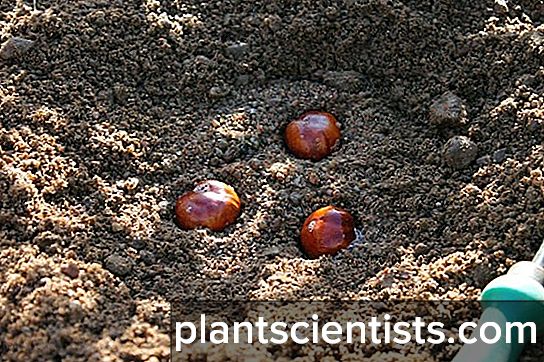

How to plant a chestnut from a seedling
It is best to plant chestnuts together, when one holds it over the pit, and the other prepares and sprinkles the earth. But, if this is not possible, then the pit is filled up to the brim a few days before planting, so that the soil settles. Optimally - in two days.
Then a small hole is dug in the center with a depth equal to the length of the root system. They spill the hole well and put the seedling with one hand, and with the other they scoop up the earth and tamp it well. Then again properly shed the earth around the seedling.
Planting chestnut tree care
Care comes down to regular watering, feeding, loosening. If there is a danger that the seedling will break, then it must be tied up. The stake is placed so as not to damage the root system. Tied neatly, without pinching or rubbing the bark. Use a soft rope or special twine.
When growing any seedling, including horse chestnut, while it is still small, you can mulch the soil with any organic material. This could be:
- fallen leaves;
- sawdust;
- cut grass;
- needles;
- tree bark.
Mulch keeps moisture at the soil surface. When decomposed, it works like a slow organic fertilizer. Mainly as a nitrogen source. No soil crust forms under the mulch and it remains loose for a long time. Earthworms quickly grow in it, which help to loosen and enrich the soil with organic matter.
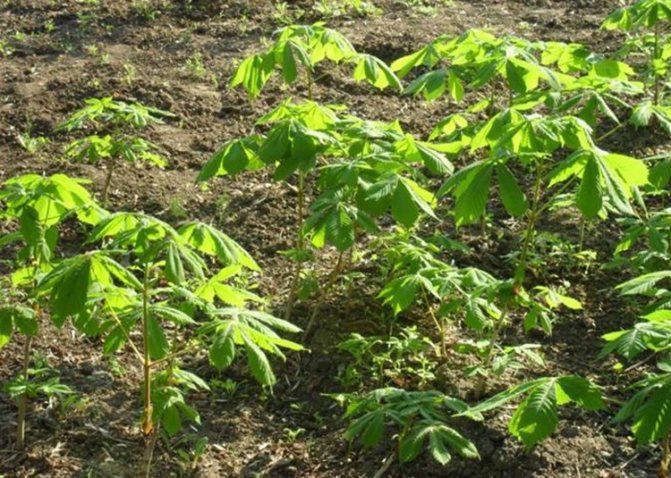

If you use needles or bark and sawdust of coniferous trees as mulch, be sure to neutralize the acidity of the soil. This can be done by adding ash, dolomite flour, lime.
Top dressing and fertilization
Top dressing is necessary, especially at first, but make sure that there is no excess fertilizer. When transplanting, you need to add superphosphate - a source of phosphorus, ash - potassium, phosphorus, calcium, compost and humus - nitrogen.
If necessary, every summer the seedlings are fed with complex mineral fertilizers. They do this about once a month and a half. Do not forget that nitrogen fertilization is not necessary in the fall.
It is better not to introduce fresh manure when digging around, as it can "burn" the thin roots of the plant.
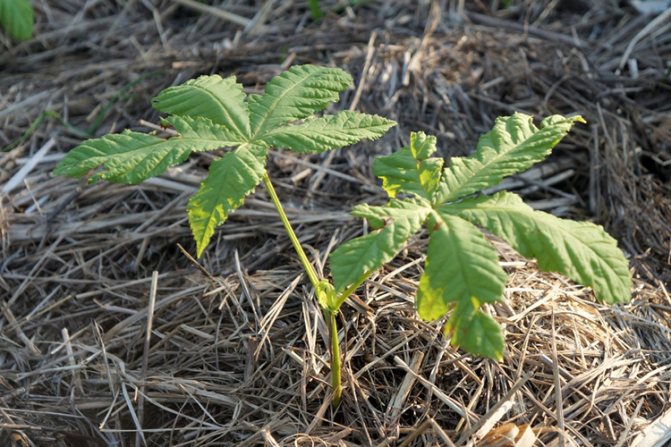

How to properly trim chestnuts and crown formation
Chestnut grows very slowly at first. In the first 10 years, he gradually adds in growth every year. After that, at the age of 10-25 years, the fastest growth of the horse chestnut begins. Therefore, you need not to miss and form the crown before active growth.In addition, dry branches should be pruned every spring.
In the first year, all shoots should be cut in half. The shortened side branches should be removed the following spring. This operation is repeated until the stem of the desired height is formed.
After leaving a few skeletal branches to form the crown, remove the rest. Cover the sections with garden varnish or ordinary oil paint. This procedure should be carried out a few days after pruning, when the cut dries up a little. Thin, thickening branches can be pruned even in summer.
Preparing for winter
Preparing young seedlings for winter is different from how to prepare an adult horse chestnut for the cold. Young trees should be covered in the early years. First, mulch the soil under the chestnut tree with a thick layer.
Then, using burlap or spunbond, we form a shelter for the seedling in the first year. You can use spruce branches, which will not only keep warm, but also protect the tree from rodents.
In subsequent years, when the chestnut grows, it is necessary to cleanse the tree of lichens and lubricate, in case of damage, with garden varnish.
The trunk circle in the fall can be mulched with manure. Fresh manure will not harm the roots of an adult plant.
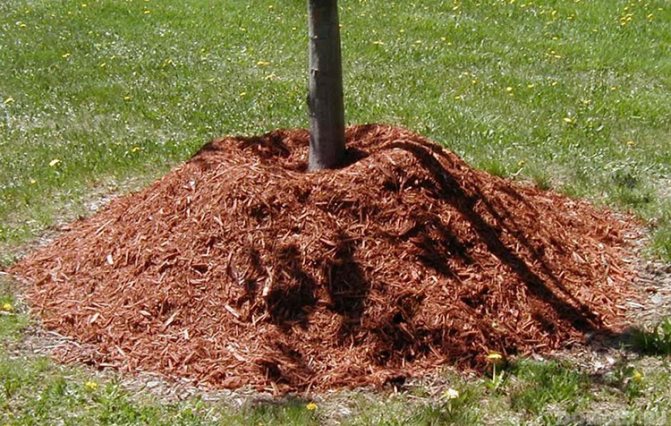

Purposes of tree pruning
Do you know how prune the apple tree correctly, and what time of year is it better to do it? Are you sure you are forming the crown correctly? If not, our article contains basic recommendations on this topic, and the accompanying video clearly shows how apple trees are pruned in the fall.
Depending on the age of the tree, pruning serves different purposes:
- the formation of a beautiful crown of the correct shape;
- strengthening of young branches;
- an increase in the number of fruiting branches;
- ensuring good access of sunlight to apples;
- removing old branches to replace with new ones;
- preparing the tree for winter.
Pruning an old apple tree in most cases allows it to be saved, and young trees grow and bear fruit better thanks to a similar procedure.
Propagation by cuttings
Horse chestnut cuttings are an effective way of vegetative propagation of a plant. The most important thing is to find a reliable source of planting material. Cuttings are carried out in the spring. It is better to prepare the site for planting cuttings in advance, in the fall.
Soil preparation
For planting cuttings, you need loose and moderately nutritious soil. Soil preparation begins in the fall and is somewhat similar to preparing a seedling mixture. The composition requirements are the same.
The land on the site intended for planting cuttings is dug onto a shovel bayonet and thoroughly cleaned of weeds. So that this place is not filled with weeds, they sow it with mustard, which disinfects and enriches the soil. Before the beginning of winter, the soil can not be re-processed. The site goes under the snow along with the growing green manure.
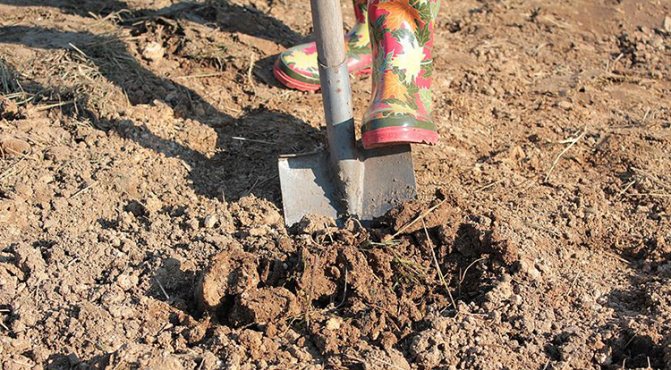

In the spring, you need to dig up the area again and loosen it. To create favorable conditions for rooting, you need to create a drainage cushion. For this, the top layer of soil, 20-30 cm, is removed and small expanded clay is placed on the bottom with a layer of 5-7 cm. The soil is mixed with sand, ash and superphosphate and returned to its place.
Harvesting cuttings
Cuttings are taken from a chestnut, which is 5-10 years old. The best time to cut cuttings is to bloom. Just don't take cuttings from those branches that already have flowers. Cuttings are taken semi-lignified. Cuttings should have 3-5 internodes.
Preplant processing of cuttings
An oblique cut is made on the prepared cuttings. This technique is used in order to increase the area of nutrition and formation of the root system. In order not to confuse the top and bottom of the cutting, some experienced gardeners make the bottom cut oblique, and leave the top straight.
The lower cut of the cuttings is processed in growth stimulants, the most famous of which is "Kornevin". Before processing, the cut must be dried for several hours. Additionally, you need to dip the lower part of the cutting into crushed coal to prevent decay.
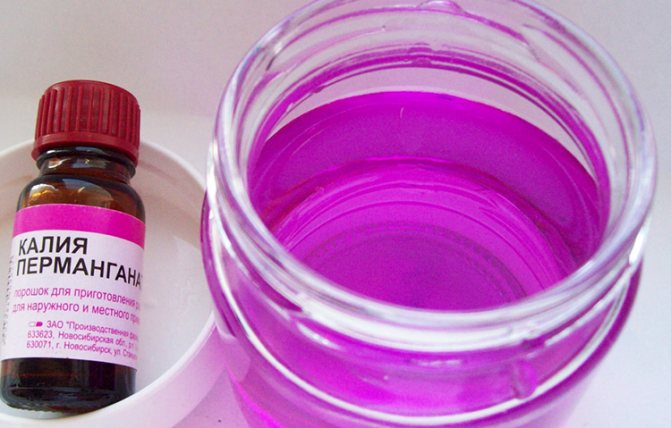

If the stalk still rotted some time after planting, then it must be urgently removed, and the place where it took root should be spilled with a fungicide or any disinfectant solution. For example, a dark solution of potassium permanganate.
It is very easy to identify a stalk that has not taken root. No leaves grow on it, and it shrinks a little.
Planting cuttings
Cuttings are planted at an angle in small grooves. They are laid in advance, filled with a mixture of sand, perlite and sifted earth. The composition of the mixture into which the lower part of the cuttings will be dipped should be very light and breathable.
We shed the furrows with a solution of potassium permanganate and plant the cuttings, deepening 2 buds each. We squeeze the earth around well, adding new earth. Landings need to be covered with spunbond.
First, cuttings need a little shading. Too bright rays of the spring and summer sun can dry out both the planting material and the soil. Secondly, soil moisture should be maintained at approximately the same level.
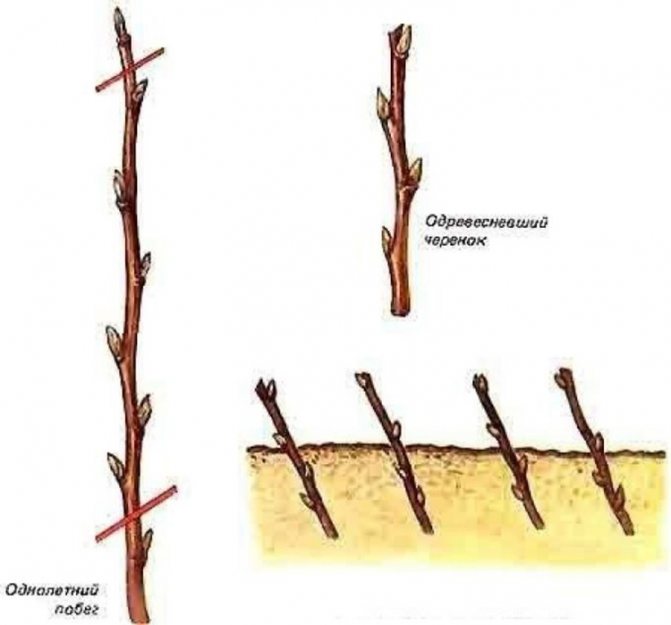

Care of cuttings
Caring for cuttings is reduced to timely watering, loosening and weeding. Until the cutting takes root, it does not need to be fed. The soil should not contain excess fertilizers, especially nitrogen fertilizers. For better rooting, the soil is dug up with superphosphate. Phosphorus is actively involved in the formation of the root system.
There should not be a single weed in the cuttings. The soil must be clean. Especially carefully you need to monitor areas that are in the immediate vicinity of chestnuts. Weeds interfere with the development of cultivated plants, suppressing them. Therefore, you need to get rid of them in a timely manner.
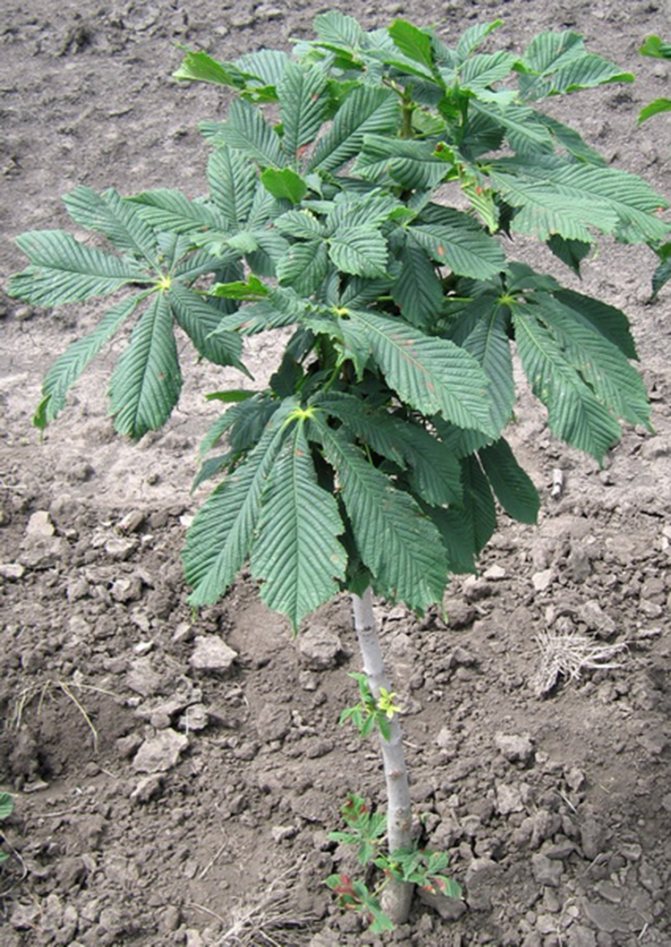

Where to plant
In order for the chestnut to feel good and grow quickly, develop, and not get sick, it is necessary to plant it:
- in a free, open space;
- well lit;
- sheltered from cold winds.
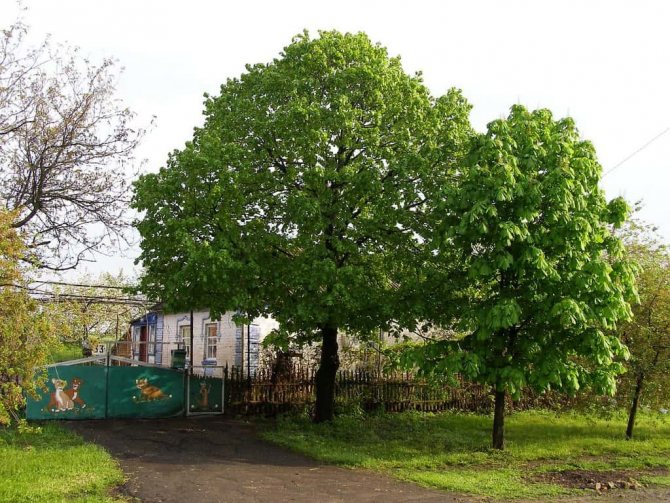

Remember that the plant has a very powerful and branched root system, so there should be no other shrubs, trees, or buildings in the immediate vicinity. For normal development and good growth, a chestnut is simply vital free space. The distance from the nearest buildings to the seedling must be at least five meters.
This plant is quite shade-tolerant, but it will bloom better in good sunlight. Protection from the wind is important due to the fact that the trunk of a young plant can be deformed from strong gusts, and the branches sometimes even break.

